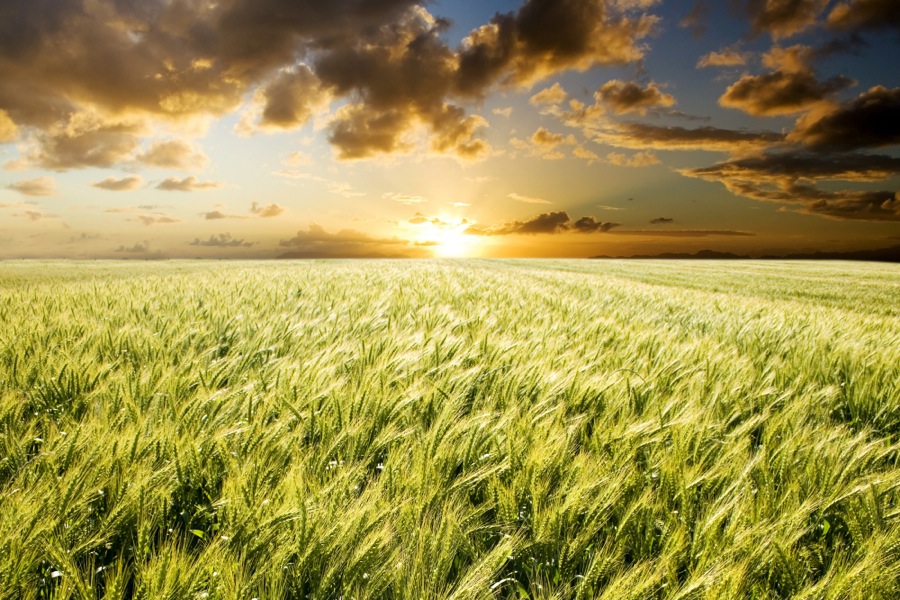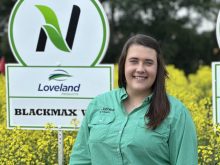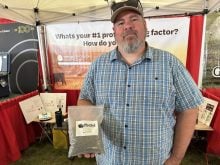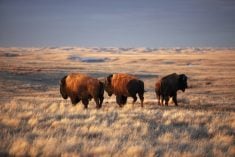The 4Rs” is shorthand every western Canadian producer knows, even though the phrase has only been around for a few years.
It stands, of course, for the Right source of nutrients at the Right rate and the Right time in the Right place.
The 4R concept was developed by the Fertilizer Institute, the International Plant Nutrition Institute, the International Fertilizer Industry Association and Fertilizer Canada (FC). In 2014, the Nutrient Stewardship Council launched the 4R Nutrient Stewardship Program, a voluntary certification program designed to help producers implement efficient nutrient use on the farm.
Read Also

Cancer agency reclassifies another herbicide ‘probably carcinogenic’
The WHO’s cancer research agency has now put atrazine, a herbicide well known to corn growers, in the same potential-hazard category where the agency put glyphosate.
“The 4R nutrient stewardship program is a framework that allows growers to increase production and productivity while improving on-farm sustainability and environmental stewardship,” says Amanda Giamberardino, manager of 4R Nutrient Stewardship for Fertilizer Canada.
4R training is available online: producers can take a variety of 4R training modules via FC’s eLearning portal. Not that it’s just for farmers. Giamberardino says the programs are geared at growers, advisers, agronomists and other stakeholders who want to learn more about 4R nutrient stewardship.
“In agriculture people wear many different hats, so if you happen to be a certified crop adviser, there are continuing education units within our courses to help the professional development,” she says.
4R training courses are available for different regions, according to Giamberardino. Provincial courses are available that tie the 4Rs to local conditions and local farm profiles.
Online training is designed to fit within busy farm schedules: participants can complete modules at their own pace.
Benefits?
Communication is a core element of the 4R training programs: as yet there are no direct incentives for farmers to participate, but Giamberardino says the language of the 4Rs can be a useful framework for producers to talk about on-farm environmental stewardship measures to people outside the industry.
“It enables them to be able to account for practices on their farm,” she says. “That’s always a hot topic in the greater sustainability world where questions are often raised about sustainability efforts at the farm level, and the interface of the supply chain as it connects back to the end customer.
“This training really comes in handy because it gives growers that initiative, that edge to show that they’re continuing to be great stewards of the land,” she says.
Dan Heaney, vice-president of research & development and agronomy for Farmers Edge, helped develop the online training course a few years ago.
He says that though course uptake has mostly been by agronomists rather than farmers, the program has a strongly practical bent for the latter.
“I think the program takes the science of nutrient management and puts it into a practical organization that deals with decisions producers have to make,” he says. “It allows them to organize their decisions in a way that makes sense. They have to make those decisions anyways, and it gives them guidelines about good or ‘less good’ practices.”
Dean Hubbard is a producer who runs a 3,000 acre grain farm east of Claresholm, Alta. After attending a 4R seminar in Lethbridge, he put his farm forward to do a demonstration plot for 4R training. “I selected one field to use for the demonstration plot in 2013 and have kept using 4R planning on that field since 2013. That particular field has consistently had the best yields and marginal returns in the last three crop years,” he says.
Hubbard hasn’t taken the online training program, but he says if his kids remain on the farm, he’ll ask them to complete it. “I want them to be able to properly communicate with their non-farm friends that we do care and the industry is making efforts to protect the environment,” he says. “I also believe that using 4R nutrient planning is a win-win — protect our investment in fertilizer and protect the environment.”
Many farmers may find they are simply too busy to take the program for few tangible benefits, however.
Carrie Butterwick, an agronomist with Agro Plus Sales and Services near Foremost, Alta., says she looked into the program but never completed it. “I asked myself, ‘Would this help me bring something to the farmer?’ I found that, as an agronomist, I am already advocating for this type of responsible behaviour so there was no need for me to formalize it,” she says.
“There is also no real monetary return for the farmer to get through it yet so they, generally, don’t want to invest their time into something that doesn’t pay back in a more concrete way.”
Butterwick believes a protocol similar to the Alberta Carbon Offset System might spur farmers and agronomists to promote 4R training — and take it themselves.
















